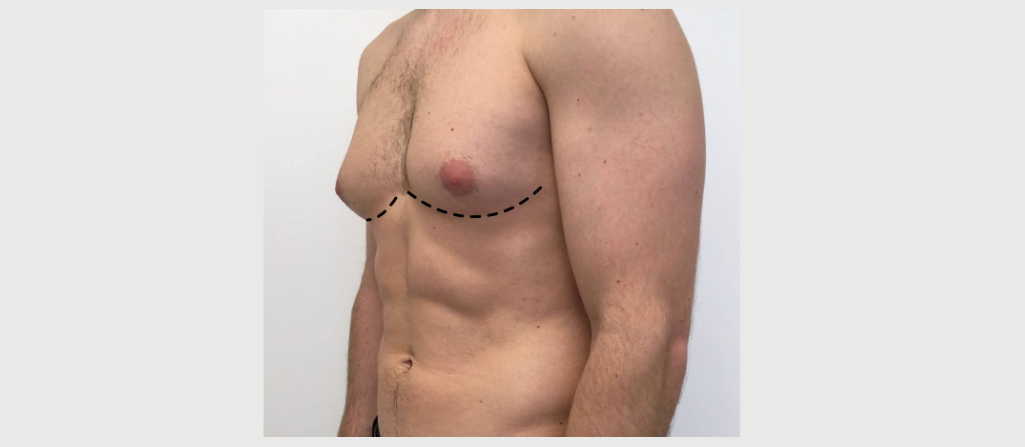Are you tired of hiding your “man boobs” or feeling embarrassed to take off your shirt in public?
Then, Gynecomastia surgery might be the solution you’ve been looking for.
Let us cover some crucial points you need to know about gynecomastia surgery, from what it is to who it is for and some risks associated with the procedure that will help you make an informed decision.
What is Gynecomastia?
Gynecomastia is a medical condition that causes men’s breast tissue to enlarge, resulting in the appearance of “man boobs.” It is a common condition affecting up to 70% of adolescent boys and 50% of older men. Various factors, including hormonal imbalances, medication side effects, and genetics, can cause gynecomastia.
Several young men go through puberty and endure changes as a result of elevated hormones, one of which is inflamed breast tissue, also known as gynecomastia. Gynecomastia during puberty is often a transient condition that can cure in as little as a few weeks or as long as six months.
Some males, however, do not grow out of gynecomastia. Some have gynecomastia later in life as a result of hormonal and/or lifestyle changes. Regardless of the underlying cause, gynecomastia surgery may be a viable option for men who are dissatisfied with the size of their breast tissue.
What is Gynecomastia Surgery?
Gynecomastia surgery is a procedure that removes excess breast tissue in men. It is also commonly called male breast reduction surgery or reduction mammaplasty. The surgery is designed to reduce the size of the breasts and create a more masculine chest contour.
Gynecomastia surgery is classified into two types:
Liposuction is utilized for milder forms of gynecomastia caused mostly by excess fat buildup. The treatment, like ordinary liposuction, is carried out by inserting a small tube (cannula) that breaks up fat deposits and suctions them out.
The excision procedure is performed in severe cases of gynecomastia, where extra skin must be excised, or nipple modifications must be made. Surgeons who use this method carefully remove and reposition skin to make the breast area appear more natural.
Who is a candidate for Gynecomastia Surgery?
Gynecomastia surgery is typically recommended for:
- Men who have tried other methods to reduce their breast sizes, such as diet and exercise, have not seen satisfactory results.
- It is also recommended for men who have experienced significant weight loss and have excess skin and breast tissue.
Note:
- The surgery is not recommended for men who have not yet reached their full physical maturity, as the breast tissue may continue to develop during this time.
- It is also not recommended for men who have medical conditions that could increase the risk of complications during the surgery.
Recovering from Gynecomastia Surgery
- After the surgery, patients will be required to wear a compression garment to reduce the swelling and reinforce the healing process.
- They may also experience swelling, discomfort and bruising, which can be managed with pain medication and ice packs.
- Patients must avoid strenuous activities and heavy lifting for several weeks after the surgery.
- They should also avoid exposing the chest area to direct sunlight until the incisions heal.
Most patients can return to work and their normal activities within two weeks of the surgery, although the final results may take several months to be visible.
What are the Risks of Gynecomastia Surgery?
As with any surgical procedure, gynecomastia surgery carries some risks. These include
Bleeding and infection: As with any surgery, bleeding and infection are risks. Patients will be closely monitored after the surgery to detect and treat these complications if they arise.
Scarring: Gynecomastia surgery involves making incisions, which can result in scarring. However, the incisions are typically small and well-hidden.
Nipple or breast sensation changes: In rare cases, patients may experience changes in nipple or breast sensation after the surgery.
Uneven chest contour: In some cases, the surgery may result in an uneven chest contour. This can usually be corrected with additional surgery.
Anesthesia risks: There is a small risk of complications associated with anesthesia, although this is rare.
Regain your confidence with Dr. Hasan Ali
Approach Dr. Hasan Ali today if you are considering gynecomastia surgery. He is renowned for his meticulous commitment and expertise. You can review the spectacular outcomes of his pleased patients.
Hasan Surgery stands apart in Dubai plastic surgery clinics’ competitive field because of its professionalism, high quality and safety requirements, and outstanding surgical results.
Get started with your consultation here!





Your article helped me a lot, is there any more related content? Thanks!